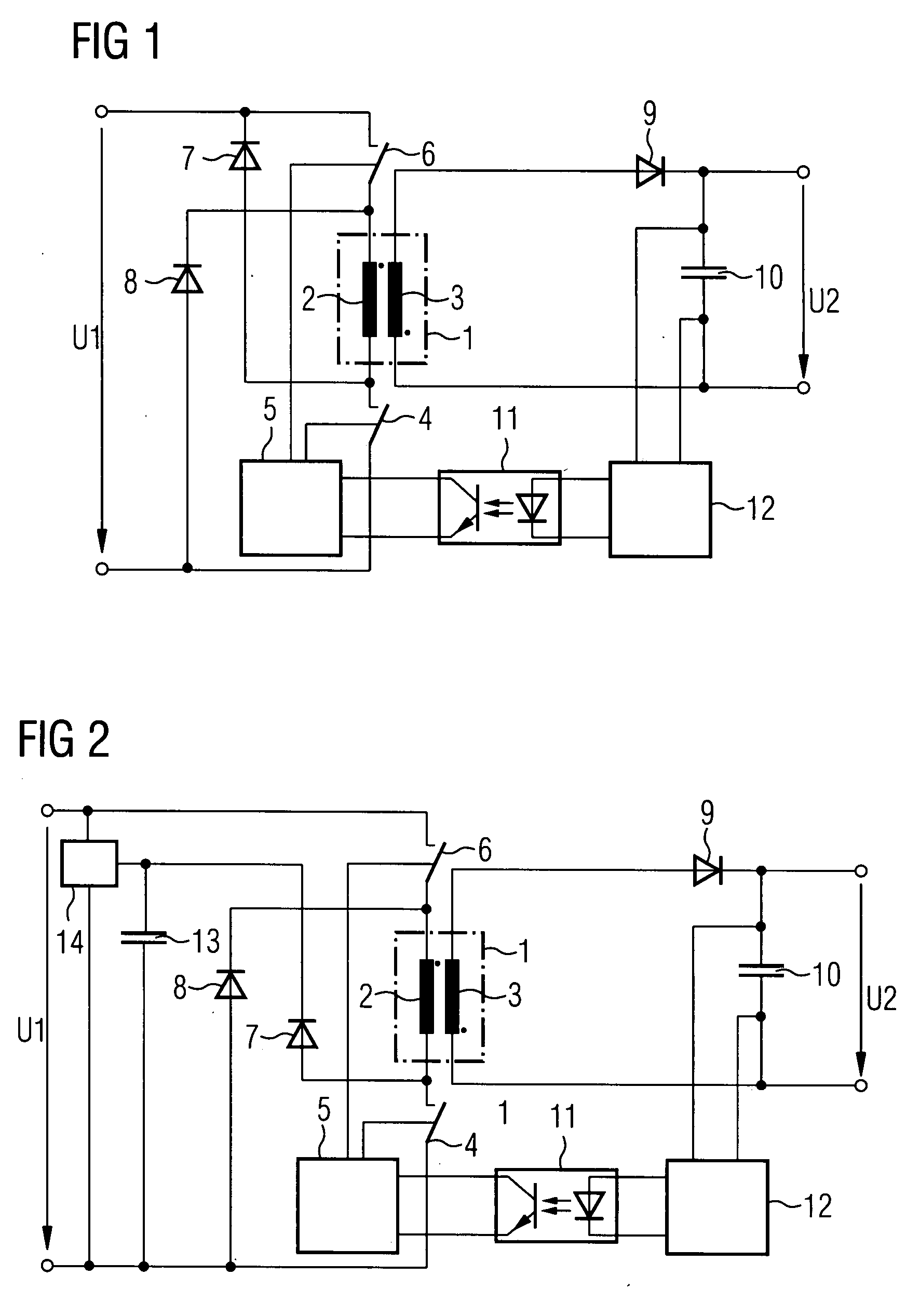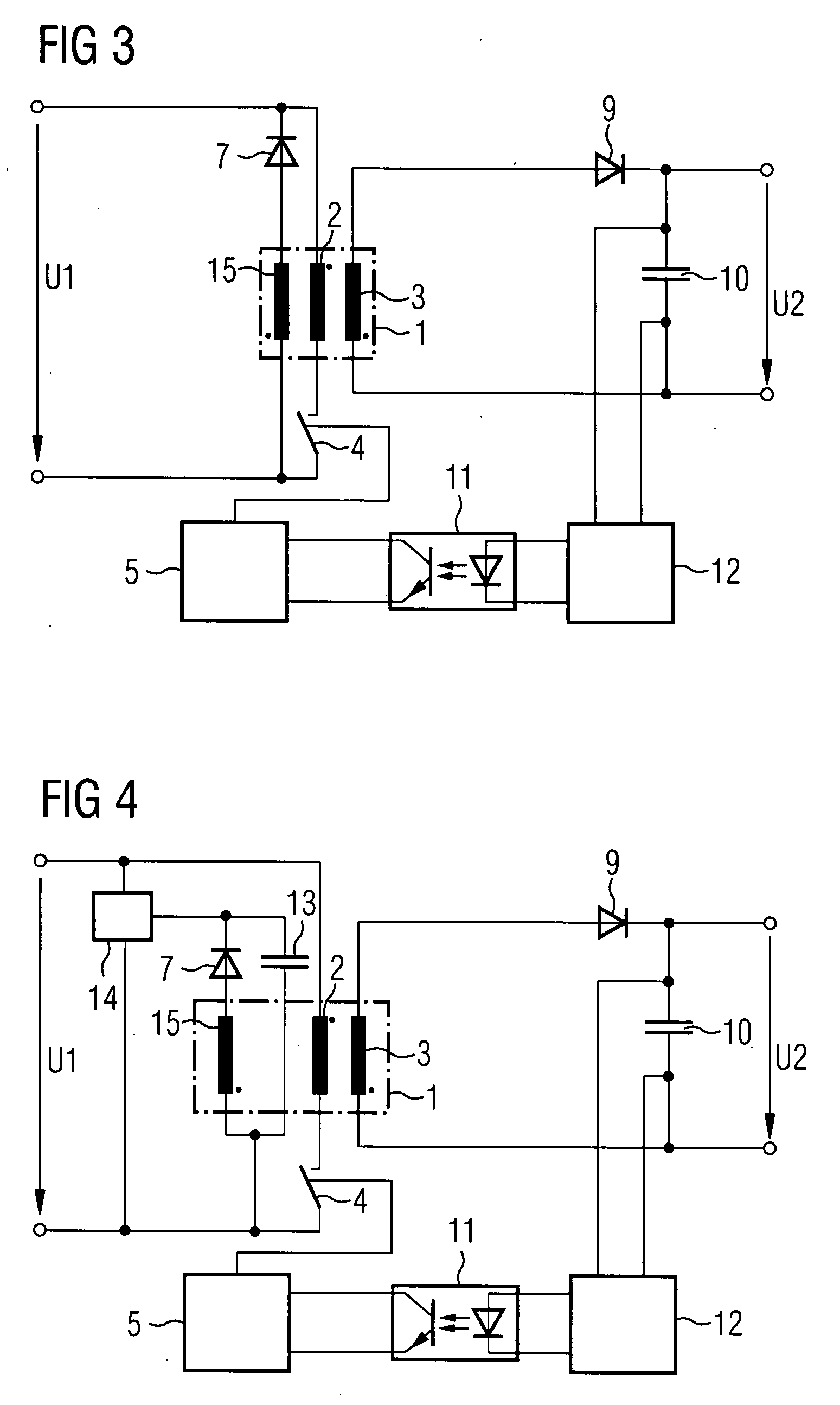Method for Operating a Switched Mode Power Supply With Return of Primary-Side Stray Energy
a technology of primary-side stray energy and power supply, which is applied in the direction of power conversion systems, dc-dc conversion, instruments, etc., can solve the problems of reducing the efficiency of the power supply, destroying the switch element, and restricting losses, so as to limit the voltage in the discharge circuit and be easily dimensioned
- Summary
- Abstract
- Description
- Claims
- Application Information
AI Technical Summary
Benefits of technology
Problems solved by technology
Method used
Image
Examples
Embodiment Construction
[0035]FIG. 1 shows a switched mode power supply as a flyback converter in simplified form. In this case, the transformer 1 features a primary winding 2 and a secondary winding 3, these being wound in a diametrically opposite manner. On the secondary side, the output voltage U2 is available following rectification by means of a rectifying diode 9 and a smoothing capacitor 10. Attached to this output voltage U2 is an output voltage regulator 12 which transfers an actuating signal via an optocoupler 11 to a controller 5 for load-dependent activation and deactivation of the two switch elements 4 and 6. This controller 5 generally works using pulse-width modulation (PWM) in this case, wherein the power which is transferred via the transformer 1 is determined by the length of the activation times in the context of a clock frequency which normally remains the same. In this case, the clock frequency is significantly higher than the mains frequency.
[0036]The winding interfaces of the primary...
PUM
 Login to View More
Login to View More Abstract
Description
Claims
Application Information
 Login to View More
Login to View More - R&D
- Intellectual Property
- Life Sciences
- Materials
- Tech Scout
- Unparalleled Data Quality
- Higher Quality Content
- 60% Fewer Hallucinations
Browse by: Latest US Patents, China's latest patents, Technical Efficacy Thesaurus, Application Domain, Technology Topic, Popular Technical Reports.
© 2025 PatSnap. All rights reserved.Legal|Privacy policy|Modern Slavery Act Transparency Statement|Sitemap|About US| Contact US: help@patsnap.com



